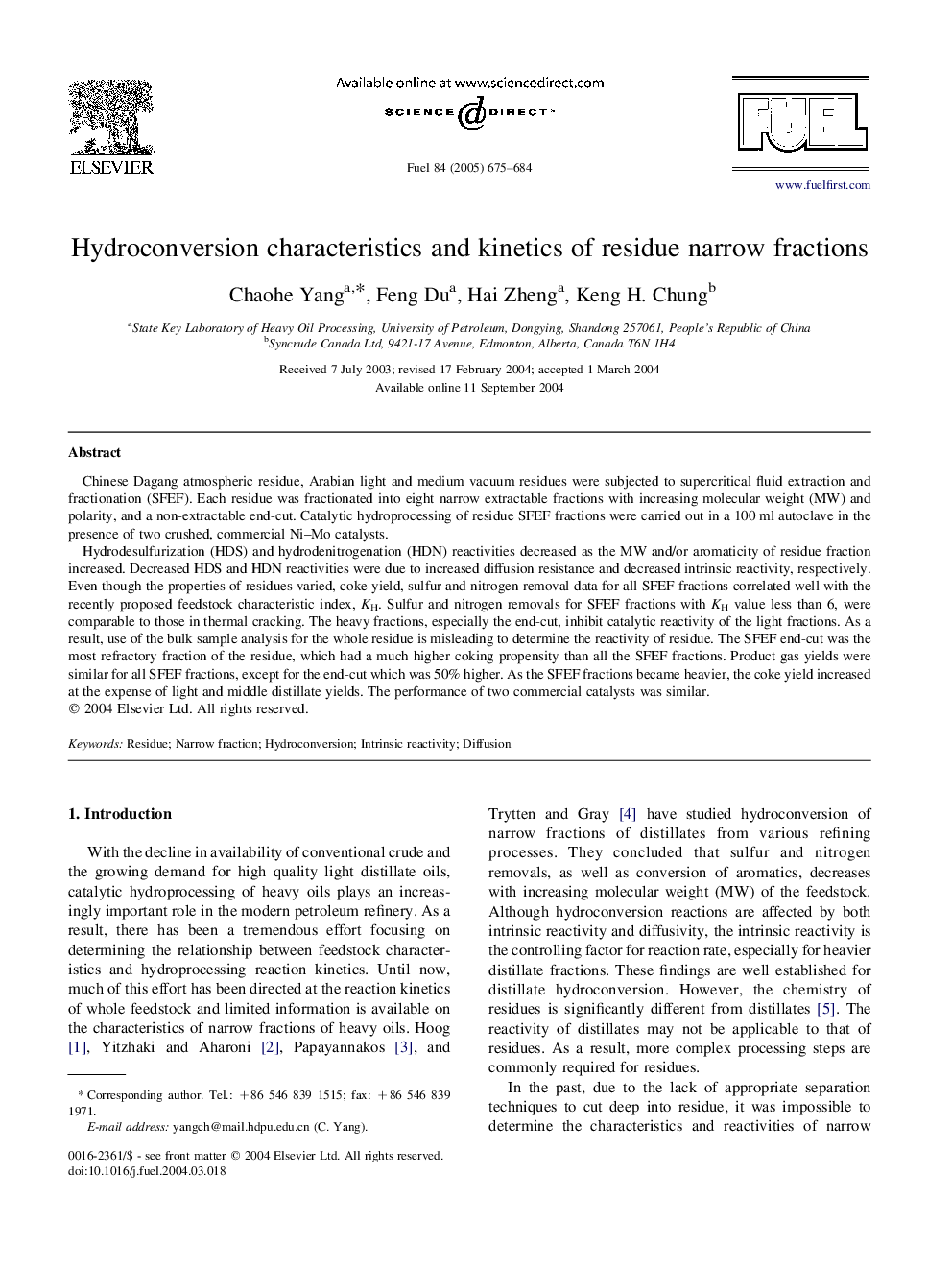| Article ID | Journal | Published Year | Pages | File Type |
|---|---|---|---|---|
| 10273767 | Fuel | 2005 | 10 Pages |
Abstract
Hydrodesulfurization (HDS) and hydrodenitrogenation (HDN) reactivities decreased as the MW and/or aromaticity of residue fraction increased. Decreased HDS and HDN reactivities were due to increased diffusion resistance and decreased intrinsic reactivity, respectively. Even though the properties of residues varied, coke yield, sulfur and nitrogen removal data for all SFEF fractions correlated well with the recently proposed feedstock characteristic index, KH. Sulfur and nitrogen removals for SFEF fractions with KH value less than 6, were comparable to those in thermal cracking. The heavy fractions, especially the end-cut, inhibit catalytic reactivity of the light fractions. As a result, use of the bulk sample analysis for the whole residue is misleading to determine the reactivity of residue. The SFEF end-cut was the most refractory fraction of the residue, which had a much higher coking propensity than all the SFEF fractions. Product gas yields were similar for all SFEF fractions, except for the end-cut which was 50% higher. As the SFEF fractions became heavier, the coke yield increased at the expense of light and middle distillate yields. The performance of two commercial catalysts was similar.
Related Topics
Physical Sciences and Engineering
Chemical Engineering
Chemical Engineering (General)
Authors
Chaohe Yang, Feng Du, Hai Zheng, Keng H. Chung,
